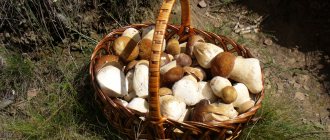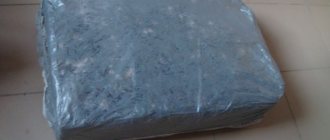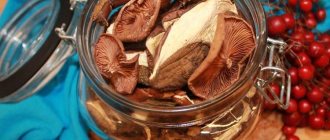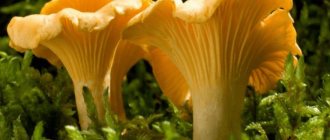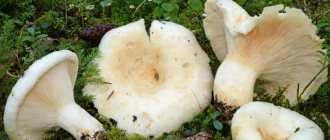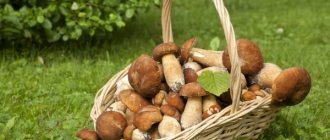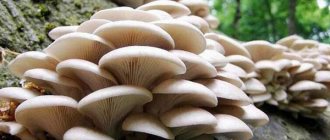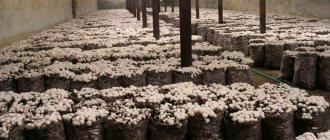We can safely say that dishes that include mushrooms are enjoyed by the majority of the population. Growing mushrooms at home is a completely doable task, especially since today you can easily purchase planting material
Growing mushrooms at home has become quite a popular activity in recent years. They are cultivated for family consumption or for sale, which can be a good addition to the budget. Of course, you should not think that growing high-quality products is easy and simple - you will have to make some investments, as well as show patience and make some efforts. However, if you have the desire and minimal capabilities, then you can try your hand at growing this healthy and pure product for your table. If the experiment is successful, then you can move on to expanding the business, since there is nothing complicated or impossible in the process.
Growing mushrooms at home
What mushrooms grow at home?
You can grow different types of mushrooms at home. If you have no experience in this matter, then it is better to focus on the most common options:
- oyster mushrooms;
- honey mushrooms;
- Champignon.
They are considered not only easy to care for, but also the most productive. Knowing how to grow mushrooms at home, you can plant classic forest varieties. The most popular are white chanterelles.
From a business point of view
Let's try to evaluate a business based on growing mushrooms. For this purpose, we will use the data of an average estimate of the cost of raw materials and finished products using the example of oyster mushrooms. Oyster mushrooms are the cheapest mushrooms, so their profit per unit of mass sold will be minimal; for other mushrooms (for example, champignons) it will be slightly higher.
Farm for growing oyster mushrooms in several tiers
Let's evaluate the income part. The yield of oyster mushroom is on average 30% of the mass of the substrate with mycelium. The substrate is capable of producing two harvests before losing its effectiveness. Consequently, up to 600 kg of oyster mushrooms can be collected from one ton of substrate. The average price of these mushrooms is:
- wholesale sales – from 1 to 1.5 dollars per kilogram
- retail sales – from 1.7 to 2.5 dollars/kg
Even in the most minimal scenario, with wholesale sales of goods from one ton of substrate, a gross profit of $600/t is obtained.
Now the costs:
- The average cost of a ton of substrate for growing oyster mushrooms is about $50/t
- The amount of mycelium per ton of substrate can be several kilograms
- Its cost will be approximately $25/t
Additional costs must also be taken into account in the cost of mushrooms. They can be either related to production (humidification, fertilizers, lighting, etc.) or overhead (transport, advertising, other contract-forming expenses). If we make an average estimate, then about $40/t can be allocated for the former, and $25/t for the latter.
Thus, the total cost of growing mushrooms from one ton of substrate is about 130-140 dollars. Taking into account taxation and possible costs to personnel, we find that the net profit from oyster mushrooms is about 250-270 dollars per ton.
To generate income from oyster mushrooms of $1,000 or more, the business should start with at least four tons of substrate. On average, one bag of substrate weighing 10 kg requires 1.2 m in height and about 0.35 sq.m of area to be placed. Four tons of substrate will require an area of about 125 sq.m. for its placement.
It is best to place bags of substrate in several levels. If the room is of sufficient height, their number can be three; in ordinary, so to speak, home conditions, two levels are usually used. Thus, the profitability of oyster mushrooms per unit area is $4 per square meter. meter with two-tier arrangement of bags with substrate and 6 dollars/sq. m. with three tiers.
Similar costs for champignons give figures of about $350 per ton of substrate.
The high profitability of mushroom farms makes them very attractive for private businesses. But that’s not all: in countries with problems with food production or with a poor range of products, mushroom cultivation is the main source of protein products for the market.
Oyster mushroom farm in North Korea
Anyone can start a mushroom business. The main thing is to agree in advance on the channels for selling finished products, or to engage in this sale yourself. As in any business, there are small nuances here: for example, in the spring (during Lent) the consumption of mushrooms increases, and their prices rise slightly, and so on.
Conditions for obtaining a rich harvest
To understand how to grow mushrooms in the country, it is important to understand the conditions that this crop requires. First of all, provide a suitable microclimate. It consists of the following factors:
- High humidity. We need high levels of this value. 80–85% is considered optimal.
- Comfortable temperature. Mushrooms need a range of 10-20°C.
- High quality lighting. The natural level is not enough. Especially if growing is done away from windows. You can replace the sun with lamps.
- Good ventilation. Fresh air must be supplied to the plants. Air stagnation should not be allowed.
To properly maintain the necessary conditions, be sure to monitor the indicators. Special devices are required. You can install sensors for monitoring.
Arrangement of the mushroom chamber
If you plan to grow mushrooms commercially, you will have to install a mushroom chamber in the basement or other relatively warm place. It must be equipped with the equipment necessary to create favorable conditions.
Example of equipment for a mushroom chamber in a basement or garage
- Thermal insulation . Foamed foil polyethylene, which is used to cover the walls and ceiling, is well suited for insulation and heat reflection. This material will help save on heating costs.
- Heating the room . This process can be carried out in any of the available ways - a stove, heating devices, or carrying out general heating in the basement.
- Hydration . The air in the chamber must have high humidity. To achieve this, different devices are used - these can be household or special ones designed for mushroom chambers, air humidifiers or an evaporation system coming from the oven.
- Ventilation . The room should have good ventilation, since during the growth period any mushrooms need air flow. Therefore, an exhaust fan should be built into the natural ventilation system to promote the circulation of air masses. Perforation, in other words, cutting bags with sprouted mycelium
- Lighting . The mushroom chamber must be equipped with lamps with diffused light. During the period of mycelium germination, the light in the room is not turned on. When the substrate is overgrown with the root network of the mycelium, the light is turned on only to perforate the blocks. When the first mushrooms appear, the lighting in the chamber is turned on for 3-5 hours a day. Sprinkling champignons
- Watering . Mushrooms grown in blocks (plastic bags) do not need watering, since they have enough moisture, which they take from the initially moistened substrate. A small amount of the product, which is planted in open containers, is sprayed with a spray bottle or sprinkled with a hose through a sprinkler. Water for irrigation should not be cold; the optimal temperature is at least 18-25 degrees.
- Shelving . To contain blocks or boxes in the mushroom chamber, racks with shelves are installed. It is recommended to make them from metal, treating it with anti-corrosion compounds, since wood will quickly collapse under the influence of moisture and fungal germination processes.
More details about the planting and maintenance of different types of product will be discussed in the following sections.
Ensuring optimal insulation
Knowing how to grow a mushroom on your property is one thing. In a house, barn or basement, it's a completely different matter. In a closed room, it is important to provide the mushrooms with proper hydro and thermal insulation.
If it is not possible to use technical regulation of the environment, then this can be done using sand and straw. They cover the floor surface.
First, sand is poured and a layer of straw is laid on top. If the material is damp, then it is necessary to replace it with a new, well-dried one.
Preparing the cellar
Before you start growing champignons, the basement must be prepared. Champignons quickly react to pests and diseases, so this stage should not be neglected. All pests are poisoned, if there is mold, they get rid of it.
Disinfection is carried out using several stages:
- The basement is fumigated with a checker;
- All surfaces except the floor are whitened;
- The cellar is sprayed with formaldehyde solution;
- If there are fruit flies in the basement, then you need to treat with chlorophos;
- You can put a box with shavings, which will be saturated with a disinfectant. It will provide additional protection against pests.
After the procedures, the room is ventilated. It is now fully prepared to begin the process.
What are mushrooms planted in?
If growing indoors, it is important to plant the mushrooms correctly. It is better to use containers made of durable materials. Most often attention is paid to plastic.
It is important to find an option without toxic contents. Containers made from natural materials are susceptible to infection by various microorganisms. Therefore, it is better not to use them.
Fruiting
When the incubation period is over, such a high temperature is no longer needed for the mushrooms. It is reduced to 17 degrees so that the champignons themselves begin to grow.
The first harvest is usually harvested after 3 or 4 months. You need to ensure that the mushrooms are ripe and under no circumstances overripe.
You can tell that the mushroom is ready by looking at the bottom cap. It should still be in white film. Mushrooms are twisted out of the mycelium rather than cut off. With this collection, it is impossible for bacteria to enter the mycelium. Then this place is covered with earth.
During the season, from 5 to 8 harvests are collected from one mycelium. The largest harvests in terms of quantity occur in the first 3 harvests. After this, the mycelium will bear fruit, but not in such large quantities.
Where to position when growing indoors
If you decide to plant mushrooms indoors, then you need to find the right place to place the boxes with mycelium. The most successful location is considered to be a basement, cellar or barn. Here the microclimate does not require serious adjustments.
It is possible to grow in an apartment, but mushroom containers should be located away from heating appliances. Most often, the optimal location is under the bathroom, in the kitchen or on an insulated balcony. Mushrooms cannot be kept in living rooms.
Caring for champignons
The best place to grow champignons will be the basement. If you don’t have your own cellar or basement, you’ll have to create a mushroom microclimate right in the apartment. To do this, you will need to allocate a separate room, which should not have sunlight, and it should also be quite damp.
Plantings can be placed on pre-prepared plastic racks. Shelves of this quality can be immediately loaded with mycelium, but if it is not possible to create such a rack, then plastic boxes or pallets will do.
The main 2 conditions for successful growth of champignons are warmth and moisture. If the cellar has already managed to provide the plantings with moisture, then the temperature must be constantly monitored. It should be between 17 - 27°C. Humidity should be in the range of 80 – 90%.
The room with mycelium must be constantly ventilated. Mushrooms will not grow in a musty atmosphere. If ventilation is not possible, you will have to create a ventilation system.
When placed in the basement, mushrooms will need weak diffused light, which can be created using a fluorescent lamp. There is no need to create such conditions in an apartment, but under no circumstances should you leave mycelium on the windowsill.
Important! The mycelium itself also needs individual hydration, so it needs to be regularly sprayed with water and ensure that it does not dry out completely.
Which mycelium to use
Many people are interested in how to grow porcini mushrooms at home. If you use mycelium grown from wild forest specimens as planting material, then the idea will most likely fail. The fruiting bodies will not grow. The room conditions are not suitable for them.
For indoor breeding, it is better to purchase special planting kits. The kit includes special soil with ready-made mycelium, as well as a protective layer that retains substances harmful to humans and retains moisture in the soil.
Selection of mycelium and preparation of substrate for champignons
The mycelium (mycelium) of champignons should be purchased only from trusted manufacturers - in order to have a guarantee that it will be healthy, sterile and of high quality.
When purchasing mycelium, keep in mind that there are three main varieties of cultivated champignons, which differ in appearance by the color of their caps: white, cream and brown. The first two are usually more productive, but brown champignons are more resistant to temperature/humidity fluctuations and generally to unfavorable environmental conditions.
Mycelium can be grain (sold in plastic bags) and compost (usually in glass jars). The first can be stored for up to six months at a temperature of 0-4°C, the second at the same values for almost a year. Compost mycelium is less productive, but not so sensitive to changes in temperature and humidity.
If you have nowhere to buy mycelium, you can collect it in places where wild champignons grow (you need to take pieces of soil with thin bluish (and therefore young) mycelium, discarding thick yellowish mycelium) or grow it at home yourself. To do this, either fungal spores are sown or isolated from individual pieces of fungal tissue. Wort agar, carrot agar or oat agar are used as a nutrient medium for growing champignons at home.
As for the substrate suitable for champignons, the best option at home would be properly prepared compost based on straw and fresh horse (or, alternatively, cow) manure. As a last resort, manure is replaced with chicken droppings. When preparing this nutrient mixture, it is very important to maintain all proportions and maintain its acidity at a level of 7.3-7.5 pH.
For 100 kg of clean, dry rye or wheat straw without mold, take 40-80 kg of manure, 2 kg of urea, 2 kg of superphosphate, 8 kg of gypsum and 5 kg of chalk. The volume of the substrate prepared from this set of ingredients is precisely designed for the above minimum usable area of 3 sq.m - it will be 200-250 kg.
If bird droppings are used, urea should not be added, because it is initially enriched with nitrogenous compounds.
The composting site must be well ventilated - active heating and ammonia release will occur during the process. It should also be concreted on the floor and protected on top by a canopy - the ripening compost should not be allowed to come into contact with soil or rainwater, because with them, spores of pest fungi can penetrate into the prepared substrate, which will subsequently be very difficult to get rid of.
The straw is soaked in water for 2-3 days (until it starts to “burn”), and then layer-by-layer with manure is folded into a pile. Urea with superphosphate is also added to each layer of wet straw. In the end, there should be at least 3-4 layers of straw and manure each 30-35 cm high.
After laying the pile, you need to water it several times a day - it must remain moist at all times. After a week, the pile is first re-knocked (shaken) - the layers are mixed with a pitchfork, swapping internal and external ones. In total, 4-5 such interruptions should be done with an interval of 3-4 days (not forgetting to moisten the pile during the process). During the penultimate interruption, gypsum and chalk are added to the composition of the prepared substrate (the more, the wetter and heavier the resulting substrate is).
In total, it will take 20-25 days to prepare the substrate. Its readiness can be determined by the disappearance of the ammonia smell and uniform dark brown color. A ripe, high-quality substrate is moist, soft, loose, does not stick to your hands, is slightly springy, and the straw in it breaks easily.
- How to make compost for growing champignons at home
We reveal the secrets of how to make compost for champignons with your own hands.
The finished substrate is laid out in containers (wooden boxes or bags for indoor growing, or half-meter-deep pits lined with polyethylene when growing in the garden) and lightly compacted. After 2-3 days, when the temperature inside the laid compost drops to 23-25°C, you can begin planting the mycelium.
Planting of grain mycelium is carried out by simply spreading it over the surface of the substrate (at the rate of 500 g per 1 sq.m.) and then covering it with a thin layer of compost. Pieces of compost mycelium (the size of a matchbox) are placed in holes at a depth of 4-5 cm in a checkerboard pattern at a distance of 20 cm from each other and are also covered with substrate.
Growing mushrooms in the garden
Understanding how to grow oyster mushrooms or any other species is not difficult. The main thing is to find optimal conditions for their placement. If there are many obstacles for this indoors, then it is easier to find a place outdoors. It is advisable to use part of the site under the canopy of trees.
There should be good access to sunlight, but shade from the scorching midday rays is mandatory. Vegetable and other debris is removed from the planting site. Be sure to remove the top layer of soil.
Instead, a specially prepared substrate is laid. This is where the mycelium is placed. The top of the planting should be covered with moss or sawdust from coniferous trees. It is also acceptable to use dry leaves or forest grass.
Truffle cultivation
Given the high cost of mushrooms, attempts have long been made to grow them artificially. The so-called Australian method is considered the most successful. It requires quite a large area and is quite expensive, however, due to the high cost of truffles, it is completely justified.
Truffles after the first year of cultivation
Truffles are grown in large areas, 1 hectare or more, and the number of plants infected with truffle mycorrhiza can reach up to 500. In just a year, the truffle harvest will be about 4 kg per hectare, and after 5-6 years it will be about 20 kg per hectare.
Preparation for cultivation
It is best to infect oak or hazel seedlings with mycorrhiza. It is the seedlings that need to be used, and not young (and especially not old) plants. In order for mycorrhiza to form without problems, the seedlings are kept in greenhouse conditions for some time.
Some breeders even recommend quarantining the seedlings for 40-60 days, even with air insulation.
When the seedlings reach a length of up to 20 cm, it is believed that the mycorrhiza has formed enough to tolerate transplantation. The soil where young trees with mycorrhiza will be transplanted should be neutral or slightly acidic. It must be fertile and must contain calcium compounds.
Truffle farm in the field
The soil is carefully dug up and processed before planting. No fertilizers are applied to avoid the death of mycorrhizae. Given the large growing areas, seedlings are planted at intervals of 4x5 or 5x5 meters.
Such distances are due to the fact that the overgrown mycorrhiza of one truffle already after a year occupies an area of about 20 square meters. m. Planting is best done in the spring, when there is no threat of frost. There should be no coniferous trees, poplars or willows nearby. The planting depth of young infected plants is up to 75 cm.
Care
900 gram white truffle
Each seedling is mulched with a diameter of 40-50 cm and covered with plastic film. During the first two years, it is necessary to remove weeds around all planted plants.
Fertilizing is carried out with a small amount of complex fertilizer containing nitrogen, phosphorus and potassium. Frequency – 2 times a year, at the end of autumn and beginning of spring.
The site should be protected from rabbits and pigs, which are capable of finding and destroying the entire crop on the site in less than a couple of days. You should remove any other mushrooms from the area and ensure that there is no infestation of weevils or cockroaches. In case of insect attacks, it is recommended to use insecticides.
Harvesting
When the spores in a truffle mature, it is ready to be harvested
Typically, tubers are located at a depth of about 20-30 cm from the surface level. An indicator that there are mushrooms is the presence of truffle flies in the area.
When digging a truffle from the ground, you can use ordinary garden spatulas for small plants.
Where to place it when planting outdoors
The well-known natural method of growing mushrooms under trees is also acceptable for cultivation in a summer cottage. The mycelium is brought into the ground under a moderately spreading crown. It would be good if it was not a fruit crop, but a wild tree.
Spruce, birch or aspen are perfect. Under a tree is not the only possible solution. Honey mushrooms and oyster mushrooms grow well on stumps, logs or in bags. You can plant porcini mushrooms and champignons in beds or pots.
Champignon business: profitability and payback - calculations
The minimum cost to start a business is 700,000 rubles. Most of the money will be needed to purchase growing equipment. It is difficult to create and maintain a microclimate. Monthly expenses are about 70,000 rubles. You have to pay rent, make utility bills, pay taxes, pay salaries to staff.
You will reap the first harvest no earlier than 1.5 - 2 months from the moment the business is launched. Therefore, include monthly expenses for this period in your starting capital. In general, the launch will require about 1 million rubles.
The retail price of 1 kg of champignons is 250 rubles. For wholesale sales, the figure is reduced to 150 rubles. From 100 square meters in a month you can get about 2000 kg of champignons. One mycelium produces 6 harvests per year. The total earnings will be 1,800,000 rubles per year. Average monthly profit - 150,000 rubles. Business profitability is 25 - 40%. The business will pay off within one year. With an increase in space, income will increase, but personnel and rental costs will also increase.
| Index | Meaning |
| Initial investment amount | 1 million rubles |
| Monthly expenses | 70 thousand rubles |
| Monthly income | 150 thousand rubles |
| Net profit per month | 80 thousand rubles |
| Payback period | From 1 year |
How to plant mushrooms?
To grow mushrooms yourself, you can buy seeds and spores for planting. You can try to breed forest varieties from specimens collected in the wild. To do this, several fruiting bodies are crushed.
You can use trimmings or waste from cleaning what will be used for food. The resulting pieces are filled with water. It is better to use collected rain moisture or natural moisture from a natural source.
The mixture is infused for a day, the water is drained, and the pulp is brought to a pulp state. The resulting planting material is heated to 20°C. The mycelium is planted in a substrate corresponding to the type of mushroom used. After planting, it is advisable to water it with the same water that was used to infuse the mycelium.
Growing mushrooms in the garden or at home is not that difficult. It is enough to carefully study the landing information. It is important to provide the mushrooms with suitable conditions. This plant does not require special care.
Harvesting Rules
From the moment of sowing to the harvest of the first harvest, approximately 3-4 months pass, depending on the method of growing mushrooms. To eat, you need to pick medium-sized mushrooms with the membrane intact. Champignons with strongly opened caps are used as seed material. It is not recommended to pick mushrooms with darkened light brown caps; they can cause intoxication to the body.
The champignons do not need to be cut; they are usually twisted out of the soil, and the remaining hole is sprinkled with compost. In the future, a new mushroom will grow in this place.
The period of active fruiting lasts 8-14 weeks. During this time, the harvest is harvested approximately 7 times. When the yield decreases, the mycelium is removed (later it is used as feed for the next generation), and the substrate is disposed of, because it cannot be reused; it loses its fertile properties.
Photos of growing mushrooms at home
Diseases and pests
Mycogonosis (white rot)
Infection usually occurs from the soil, but spores can be carried by insects, people, and air currents. For prevention, it is necessary to regularly disinfect the premises, ensure optimal humidity and temperature. If infection has already occurred, the mycelium and soil will have to be destroyed.
Dry rot
It looks like a gray coating on mushrooms. It develops at lower temperatures than white rot and is sometimes adjacent to it. Prevention and control methods are similar. If rot occurs regularly, try dark varieties, they are more resistant.
Yellow mold
On mushrooms it appears as light brown spots, the mycelium becomes gray, with green spores. It is immediately noticeable on the ground and forms white fluff. Spores are transmitted very easily: by pests (ticks, rodents), through the air, through water, on the surface of clothing and equipment. Mold, like rot, cannot be cured - only destroyed.
rust spot
Looks like rust spots on mushrooms. Occurs in musty, damp rooms from bacteria that may remain in the untreated substrate. If detected, remove diseased mushrooms and adjust growing conditions.
Mummification
The most popular disease encountered when breeding champignons. Caused by a virus whose origin is still unknown. During mummification, ripe mushrooms turn gray, and when cut, they turn brown. Diseased fruits are destroyed by the entire mycelium along with the soil.
Main pests:
- springtails (springtails) are white, brown, black small insects that live in the soil. To prevent them from eating mature mushrooms, heat the substrate before use;
- mites eat mushrooms and mycelium. They should also be destroyed before planting by steaming (from + 30 °C) and sulfur-lime decoction or metaphos;
- woodlice breed in high humidity and happily feed on ripe champignons. If insects are found, reduce the humidity level and provide air circulation;
- Fly larvae can also get into the compost from untreated soil and spoil the crop.
Conclusion
The conditions for growing mushrooms at home are not that difficult, which is why mushroom growing is becoming increasingly popular in our country. An excellent product that is nutritious, tasty and healthy. Absolutely anyone can start growing mushrooms, but before you start growing mushrooms, you should evaluate your strengths and capabilities.
The business of growing mushrooms is profitable. To grow mushrooms at home, in addition to time and financial investments, you need to have space and a great desire. This can become a profitable business for your family, and will also help provide yourself and the whole family with fresh mushrooms all year round.
Growing mushrooms at home on your own can be a great help for the family budget. With minimal financial costs, you can make a good profit and provide yourself with mushrooms and money.
If the article was useful and interesting, share it with your friends! I would be grateful for your comments and subscription to my diary. With sincere respect to you, author of the online diary, Olga

